| Columns Retired Columns & Blogs |
Channel Islands Audio VHP•1 headphone amplifier Measurements
Sidebar 3: Measurements
I measured the Channel Islands VHP•1 using the VAC•1 AC power supply. The maximum voltage gain was 16.2dB or 5.9dB, depending on whether the front-panel gain button was pushed in or not. The VHP•1 preserved absolute polarity, and its input impedance was a fairly low 6.9k ohms across the audioband. Its output impedance was a low 11 ohms at all frequencies.
The frequency response was wide and flat, and just 0.2dB down at 200kHz (fig.1). The negligible infrasonic rolloff below 20Hz seen in this graph, which was taken into 150 ohms, disappeared when the amplifier was measured into 100k ohms. The volume control was set to its maximum position for this measurement; at 12:00, a 0.75dB imbalance had crept in (not shown). Channel separation was better than 100dB at 1kHz (fig.2), but decreased in the treble due to capacitive coupling, and at low frequencies due to the presence of some low-level low-frequency noise. The unweighted, wideband signal/noise ratio, ref. 1V output with the input shorted, with the VHP•1's volume control set to its maximum and its gain set to High, was a slightly disappointing 73.75dB due to this noise, improving to 90dB when an A-weighting filter was used. You can see a couple of AC-supply spuriae in this graph; I couldn't eliminate these no matter how I adjusted the ground connections between the amplifier and my Audio Precision test set.

Fig.1 Channel Islands Audio VHP•1, High Gain, frequency response at 1V into 150 ohms (0.5dB/vertical div.).
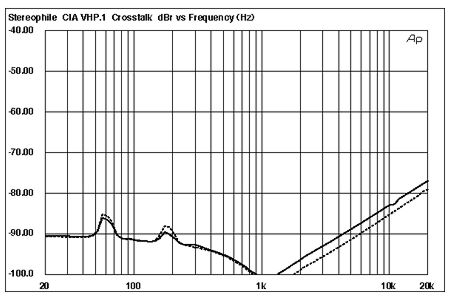
Fig.2 Channel Islands Audio VHP•1, channel separation (10dB/vertical div.).
Fig.3 plots the percentage of THD+noise present in the VHP•1's output against output voltage at 1kHz into loads ranging from 100 ohms to 100k ohms. Only into the lowest load did the amplifier break a sweat, and even then the distortion remains below 0.01% in the region where the THD products start to emerge above the noise floor. The output voltage at clipping (1% THD) was 9V, well above that required by typical headphones. Into a load impedance much higher than that of normal headphones, the distortion remained low across the audioband (fig.4, lower pair of traces). Into 150 ohms, however, the THD rose a little at low frequencies (fig.4, top traces). Though this was still at a low level in absolute terms, I would have preferred not to see it.
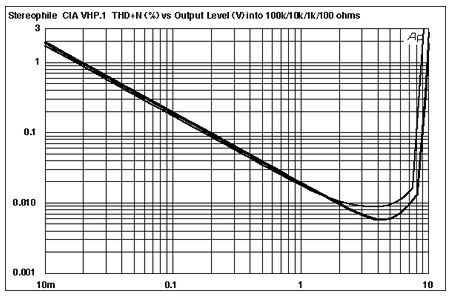
Fig.3 Channel Islands Audio VHP•1, distortion (%)vs 1kHz continuous output voltage into (from bottom to top at 3V): 100k, 10k, 1k, 100 ohms.
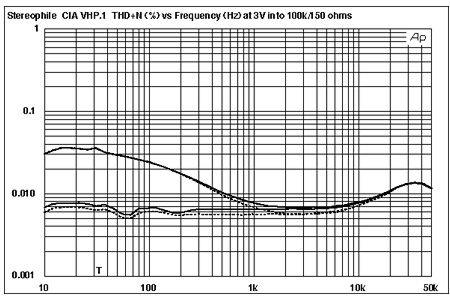
Fig.4 Channel Islands Audio VHP•1, THD+N (%)vs frequency at 3V into (from bottom to top): 100k, 150 ohms.
This effect of the load impedance can also be seen in spectral plots of the VHP•1's output. Fig.5 shows the spectrum of a 50Hz tone at 2V into the high 100k ohm laboratory load. The highest harmonic is the second, at –90dB (0.003%), while a power-supply–related tone at 180Hz can also be seen just above the –100dB line. By contrast, when the load was reduced to 150 ohms (fig.6), the second harmonic rose to –67dB (0.04%) and was joined by the third and fourth harmonics. These will still be inaudible at these levels, but this behavior suggests that the VHP•1 is less linear at low frequencies into lower loads than it is in the midrange. This behavior didn't seem to be affected by the setting of the gain switch. Intermodulation distortion was very low (fig.7), though the level of the 1kHz difference component in this graph did rise somewhat with decreasing load impedances.

Fig.5 Channel Islands Audio VHP•1, spectrum of 50Hz sinewave, DC–1kHz, at 2V into 100k ohms (linear frequency scale).
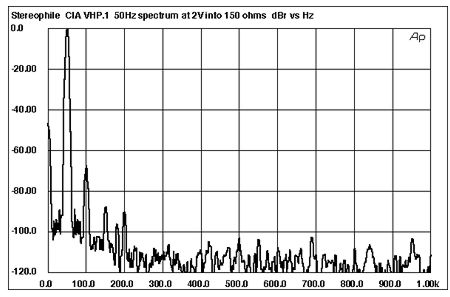
Fig.6 Channel Islands Audio VHP•1, spectrum of 50Hz sinewave, DC–1kHz, at 2V into 150 ohms (linear frequency scale).
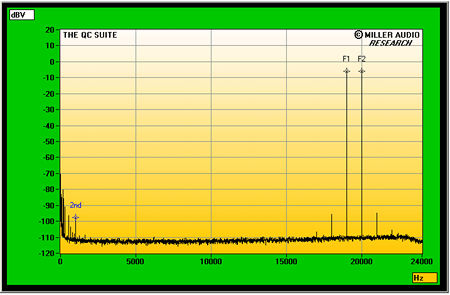
Fig.7 Channel Islands Audio VHP•1, HF intermodulation spectrum, DC–24kHz, 19+20kHz at 1V peak into 8k ohms (linear frequency scale).
Though a couple of aspects of the VHP•1's measured performance slightly raised my eyebrows, there was nothing to suggest that WP's very positive reaction to its presentation is misplaced.—John Atkinson
- Log in or register to post comments




































